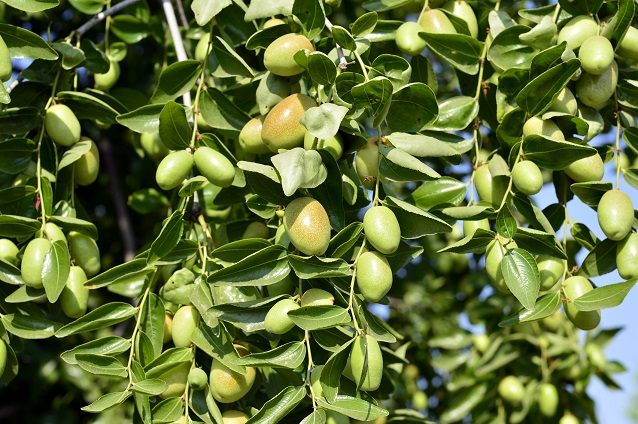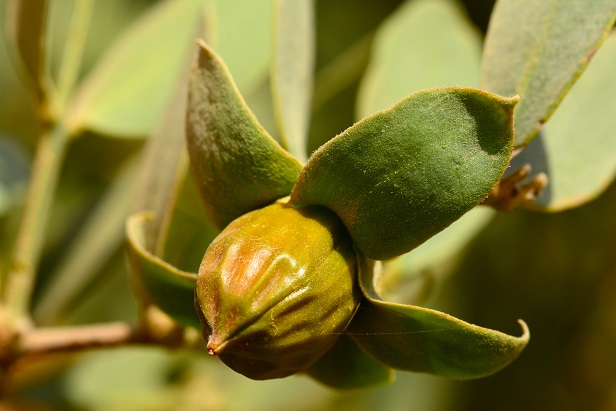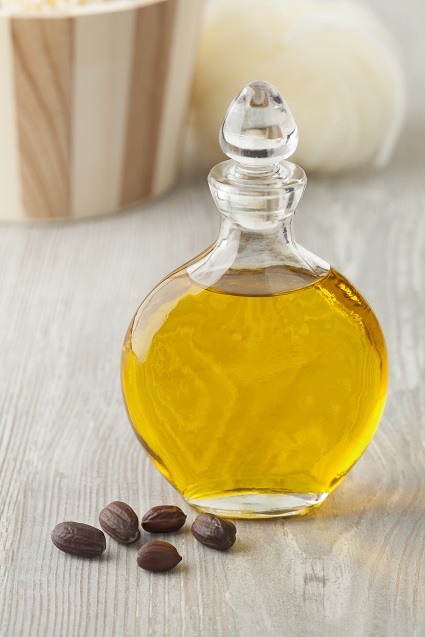 If you’ve just discovered the vast world of natural acne remedies, then heed this warning: there is perhaps no greater minefield than natural, plant-based moisturisers.
If you’ve just discovered the vast world of natural acne remedies, then heed this warning: there is perhaps no greater minefield than natural, plant-based moisturisers.
Case in point – coconut oil. This “superfood” is so popular that Sumatran farmers have legions of trained monkeys to climb up and whack the coconuts out of trees. It’s made up of 48% lauric acid, an antibacterial fatty acid found anywhere else only in breast milk.
However, coconut oil also scores 4/5 on the comedogenic scale – it has a “high” chance of clogging skin pores. Cocoa butter is renowned for its fragrance and vitamin E, but also scores 4/5.
Olive oil, meanwhile, has decent softening and hydrating powers. However, they’re completely derailed by its 70% content of oleic acid, a fatty acid which disrupts the human skin barrier.
Then there’s emu oil, high oleic safflower oil, avocado oil. Many natural moisturisers have fatal flaws which no amount of miracle compounds can outweigh.
It’s lucky then, that one moisturiser exists which is different – jojoba oil.
The facts on jojoba oil
 Jojoba oil is the extracted fatty portion of the spiky, 10 metre tall jojoba plant found exclusively on the American continent.
Jojoba oil is the extracted fatty portion of the spiky, 10 metre tall jojoba plant found exclusively on the American continent.
The seeds contain 50% oil, and the tree can survive for up to 200 years in the wild. The jojoba tree was first discovered by a Spanish missionary back in 1779, when he observed Californian Native Americans using the fluid for wound treatment.
Read Annihilate Your Acne – get the ultimate diet and clear your acne permanently!
160 years later, jojoba oil’s next act was to deal Hitler a big blow. If you wanted to wage war in the 1940s, then your tanks, aircrafts and heavy guns required huge amounts of lubrication, otherwise they would break down. Jojoba oil was the perfect high pressure lubricant; even soldiers carried machine guns containing it.
Importantly, jojoba oil only flows naturally in Northern Mexico and the South-western USA. All attempts to grow jojoba in North Africa have failed, and despite his dreams. Hitler never managed to conquer US shores. Spoiler alert: he also lost the war.
By 1971, your average teenager was still debating whether milk or chocolate caused acne. But 1971 was also the year of the sperm whale ban. Most oils on earth, including olive oil, are made up of fatty molecules called triglycerides, but jojoba oil and sperm whale oil are actually liquid waxes. Sperm whale oil was the backbone of industry, but by 1971 the whales were running out (and probably devising a plan to fight back).
Hence, jojoba oil stepped into its place. Jojoba oil replaced whale oil for oil lamps, factory machinery, and even keeping the hands in wristwatches ticking. Jojoba oil was cheap and abundant, and then the cosmetics industry cashed in. Jojoba oil rapidly invaded natural make-up, shampoo, conditioners, and moisturisers alike.
Sales of whole jojoba oil became huge too. In 2000, the International Jojoba Export Council estimated that sales would rise by 15% over the next five years, fuelled by DIY skincare fanatics.
You can eat jojoba oil without serious harm, but cannot digest it. It has an extremely long shelf life of 2 years, and rarely goes rancid. The only skincare oils which are more stable are coconut oil and castor oil.
Recommended – the top 6 vitamins and minerals for acne-free skin
Jojoba oil is an attractive clear golden liquid in its unprocessed form. It makes for exceptional advertising fodder thanks to containing vitamin E, silicone, copper, zinc, selenium, iodine and chromium (the quantities are very debatable). But it’s liquid wax properties which have got acne patients really excited; they speculate that jojoba oil has mystical powers.
Jojoba oil – the master of moisturisers?
This scientific study from 2008 began right away by mentioning that “Jojoba Esters… have been shown to increase skin hydration and improve sensory skin “feel” when included in a variety of skin, hair, and nail care cosmetic/personal care formulations”.
The hydration factor is the key. There are very few studies which test jojoba oil as a moisturiser, but the scientists here obviously knew about classified research.
Then we have the study itself; the scientists applied a mixture of jojoba oil and glycerol to the lower legs of patients. The main area tested was trans-epidermal water loss (TEWL), the quantity of water lost through the skin’s outermost layer.
Effectively, they were testing how well jojoba oil traps moisture within the skin. The happy news is TEWL was substantially decreased.
What’s more, this benefit persisted for up to 24 hours after the initial application, meaning that jojoba oil is a long-lasting moisturiser.
The scientists concluded that “glycerol and hydrolyzed jojoba esters work in tandem to enhance skin moisturization for at least 24 h”. Even better, we know that the jojoba oil was responsible, because the combination resulted in significantly lower TEWL score than glycerol by itself.
The top 7 topical treatments for clearing acne naturally
Next on the agenda we have the endlessly repeated claims that being 97% wax esters makes jojoba oil an incredible moisturiser. Sadly, there’s no evidence.
The oil’s most common waxes are the obscure eicosenyl octadecenoate and docosenyl eicosenoate, but because jojoba oil is the main source in the plant kingdom, there’s almost no scientific data on them.
In fact, the same is true for other natural waxes. Many amateur skincare researchers are diehard fans of beeswax, for example, but scientists aren’t interested; maybe there’s no money in it. There’s very little evidence comparing the moisturising ability of waxes to that of normal triglyceride-based oils full stop.
That said, it’s proven that jojoba oil is doing something correctly. It might be the waxes, it might be another nutrient. The testimonials are extremely positive as well:
- “I love this stuff! Add a few drops to a moisturizer and BAM, fantastic feeling skin”.
- ”My rough skin had returned to its usual softness. The more I used jojoba oil, it became even softer”.
- “Jojoba oil makes my skin feel soft. Not dry, not oily, soft”.
- “I use jojoba oil after I wash my face twice daily, and I swear by it! I will never use another moisturizer again”.
The scientific evidence and the testimonials are in complete alignment.
Jojoba oil won’t inflame your acne further
 Where jojoba oil succeeds even further is in its lack of side effects. Firstly, it has a comedogenicity rating of only 2, indicating a “moderately low” chance that it will clog your pores up.
Where jojoba oil succeeds even further is in its lack of side effects. Firstly, it has a comedogenicity rating of only 2, indicating a “moderately low” chance that it will clog your pores up.
Again, cocoa butter and coconut oil score 4/5, while flax seed oil scores 3/5. Jojoba oil will only clog your pores if 1) they are in a grim state already, or 2) you have skin pores which are very small genetically (a big genetic aspect of acne).
Secondly, jojoba oil has almost no oleic acid to speak of. Oleic acid is one of the main spoilers in otherwise excellent topical oils, derailing both olive oil and avocado oil (although both are great as foods). Oleic acid is effectively an anti-moisturiser; it increases trans-epidermal water loss whereas any good oil should decrease it. Olive oil, for instance, contains a massive amount of vitamin E and can wipe out p.acnes bacteria, but is completely scuppered by oleic acid.
Vitamin E – the ultimate nutrient for clogged pores
Jojoba oil, however, is free from these problems. Olive oil and avocado oil have concentrations of 70% and 65.4% respectively; jojoba oil contains approximately 9.3%, but only of the portion of the 3% which is actually triglycerides.
The other 97% is wax esters, so the oleic acid content is more like 0.3% in reality. Jojoba oil’s only proven side effect is an exacerbation of contact dermatitis, according to this study. A few message board dwellers have reported a worsening of seborrheic dermatitis as well.
The reasons are mysterious, but jojoba oil is highly unresearched in general. 77% of the 3% triglyceride portion is gondoic acid which, similarly to the waxes, jojoba oil is the main source of in nature.
What about acne itself?
Firstly, we have a German study conducted on 194 acne patients back in 2012. A combination of jojoba oil and clay was applied to each patient two to three times weekly.The results were excellent; a huge 54% reduction in acne after six weeks. Both inflammatory and non-inflammatory acne lesions had fallen.
These are astonishing results on the surface, but what was responsible, the jojoba oil or the clay?
Why bread and pasta are a massive cause of acne
The specific clay used wasn’t specified. However, in this article on bentonite clay, I covered how this touted miracle treatment can in fact annihilate p.acnes bacteria, but only with a big risk of sucking the moisture right out of your skin. Overall I recommended against it, but coupled with jojoba oil, the drying dangers might be vanquished, while the antibacterial effect would be preserved.
Hence, we can’t tell whether jojoba oil really is God’s gift to skincare, or whether the clay was behind it.
Ordinarily, the study would be mildly positive, but the controversy is this: jojoba oil has extremely mediocre testimonials when it comes to clearing acne. There’s good ones…
- “My skin is completely spot free and my red marks are healing fast”.
- “I immediately saw a huge difference in my skin. The acne that was present was minimized by the second day”.
…and terrible ones.
- “Jojoba oil gave me three to four whiteheads every day.”
- “After using jojoba oil once, I got 5 huge pimples in unusual areas on my face. I waited a week and got the same reaction.”
- “Jojoba oil has done nothing but make me break out horribly. Whiteheads and huge red painful acne EVERYWHERE.
The vast majority of testimonials, however, praise the moisturising effects but report virtually zero change in pimple counts.
The mystery – jojoba undeniably has promising powers
This study applied liquid wax of jojoba to a simple scratch wound, and detected accelerated wound closure and an increase in type 1 collagen formation. The happy consequence could be accelerated healing of old pimples and clearer skin at any given time.
This study tested a combination of jojoba oil and observed a big reduction in bacterial colonisation after 24 hours. Like before, the truth is clouded due to the tea tree oil, but jojoba oil also contains moderate amounts of iodine, highly antibacterial and a popular alternative to chlorine for keeping your swimming pool clean. Hence, it might kill the p.acnes lurking in your skin pores.
Meanwhile, there are claims everywhere about bountiful vitamin E levels, but these facts are dispensed with the brain on vacation and no check on concentration. Jojoba oil actually has a small vitamin E concentration of just 2mg per 100 grams.
Meanwhile, grapeseed oil contains 28.8mg, olive oil contains 14.3mg and sunflower oil contains 41.1mg. Other nutrients which websites mindlessly rattle off include zinc, chromium, and selenium, but to cure acne with those nutrients you have to eat them (whereas vitamin E works in both ways).
But then we have this great study on rats, where jojoba oil reduced several pro-inflammatory chemicals in areas of swelling. Inflammation is the root cause of all acne.
Last, but not least, we have the most common tale of all – that because jojoba oil is 97% wax, it can imitate sebum and trick your face into downregulating its oil production.
The truth? Here is the composition of healthy human sebum: 12% squalene, 41% triglycerides, 26% wax, and 16% free fatty acids. The composition is not identical at all. They both contain substantial amounts of wax, but jojoba oil isn’t a complete replacement.
Why dairy can either destroy your skin or improve it
Sebum is vital for delivering nutrients, maintaining the acid mantle, and even repelling rainwater in cold weather (it’s not completely evil). Production won’t casually shut down. The human body is a complex and intelligent organism. Even if jojoba oil contained exactly 26% wax, it’s highly doubtful that it could mistake its own product for a random plant oil from nature.
What’s more, there isn’t any hard evidence. It’s a cool idea, but that’s the point; it’s just a theory that sounds sensible upon first thought and is exciting enough to spread like wildfire.
The hard acne judgement from all this conflicting evidence? There isn’t one; uncertainty is rife.
The jojoba judgement
What we can be confident about however is that jojoba oil is a top notch natural moisturiser.
Basically, you have two small risks: that you 1) worsen any existing dermatitis, or 2) join the small club of unlucky users who report a big acne outbreak.
How does jojoba oil rank? It’s definitely inferior to grapeseed oil. Grapeseed oil has a comedogenic score of just 2, but significantly more vitamin E (learn about the wonders of vitamin E here). Grapeseed oil is also comprised of 64% linoleic acid, a fatty acid which is lower than average in the skin of many acne patients. Jojoba oil lacks these bonuses, but as a pure moisturiser, it is excellent.
Jojoba oil dominates olive oil, emu oil, coconut oil, cocoa butter and avocado oil. It’s also a great alternative in case grapeseed oil gives you an allergic reaction. The opposite applies of course; a few jojoba users speak of “purging” and “healing crises” during the first month. The reality is that their skin just cannot tolerate it, and if you too find yourself on the road to ruin, you can just switch to grapeseed oil.
Also, we discussed how the unknown, unresearched waxes and fatty acids make jojoba oil impossible to judge. Well, that has an upside; they could be far more beneficial than anyone realises. Jojoba oil is a topical treatment with particularly great oppurtunity for experimentation.
The wacky waxes could even be why the testimonials vary so wildly. The waxes might specialise in calming inflammatory acne, but exacerbate cystic acne.
Your guide to the best jojoba oil product
Before you retreat to your acne lab, however, watch out! You must pick the right product, or your plan could backfire badly.
Firstly, there’s refined jojoba oil. This is simply raw jojoba seeds blasted into oblivion with chemicals until they come up with something that can be sold. What began life as jojoba oil is “deodorised, degummed, neutralised, de-colored, and stabilised”, with synthetic vitamins and nitrogen later added in.
One side produces fresh jojoba meal. The other produces jojoba oil, and nothing more than minor pasteurisation and filtering comes next.
The latter is what you want. The difference between the two is clear as day.
Unrefined jojoba oil is golden with a fatty odour. Refined jojoba oil is clear and odourless. Apparently this is more appealing to customers, but I think that the opposite applies nowadays. More and more people are smartening up and realising that any natural product which lacks the texture, smell and appearance of nature is surely a scam.
Also keep a close eye out for second-press jojoba oil, a particular sneaky product. This version is expeller presser, but derived from seeds already subjected to one session of expeller pressing. This second generation of oil is far darker and has a stronger smell.
The solution? Massive chemical refinement. Another booby trap is blended jojoba oil, where they combine the featureless refined jojoba oil with the overly strong second press, to balance the two.
Unrefined, organic jojoba oil is what you want, everything else is a sideshow.
This one, US Organic Jojoba Oil (amazon link), fits the bill. It’s in a dark bottle, to prevent incoming sunlight from oxidising the antioxidants and fats. Compared to tea tree oil, jojoba oil is already sunlight resistant thanks to its waxes and stability, so this product should last for years in a dark cupboard.
Beware though, because there’s several bottles out there which claim to be organic but are missing the official certification.
Use US Organic Jojoba Oil and your dreams of smooth and non-flaky skin might come true.
Conclusion
Jojoba oil is an excellent natural moisturiser, without the side effects of 1) commercial moisturisers, and 2) olive oil, coconut oil, and cocoa butter.
Remember: I always recommend top nutrition first, particularly zinc and vitamin C, since zinc decreases excess skin cell turnover and vitamin C enhances collagen formation.
As for acne, it won’t clear you totally, unless you hit the jackpot with a random set of circumstances. But the final word is this – jojoba oil is promisingly unresearched.
NEXT: get the complete strategy for clearing acne naturally
Thanks for reading!

Hello,
Would you recommend jojoba as a bath oil because of it’s stable nature? Any other oils for the bath? Coconut oil clogs my pores.
Also, any thoughts on oils for back acne? Is the skin there different in any way to the face?